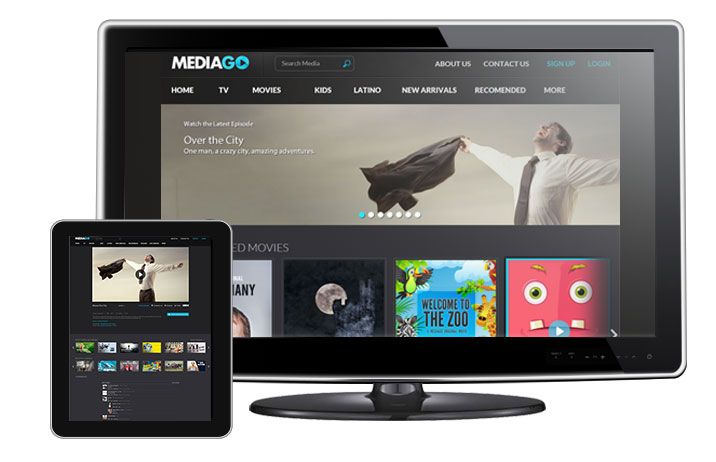Exclusives

Kaltura: Video Solutions in a Chaotic Digital World
Story Highlights
If you’re a content company getting a new digital video service off the ground, things aren’t supposed to be plug-and-play simple.
Multiple video formats, multiple monetization techniques, an untold number of devices, 4K, HDR, new sound formats. If it sounds exhausting to you, imagine how it feels for media and entertainment companies responsible for handling it.
That’s where Kaltura comes in. Since launching a decade ago, the New York-based company has had almost a singular mission: offer a video platform as a service, something that media and entertainment companies can use to make the most out of their video strategies, whether it be offering features straight out of the box, to custom applications, to specifically tailored workflows and integrations.
And everyone from HBO to Turner, from Paramount to Warner Bros., has taken advantage of what Kaltura offers.
Iddo Shai, director of product marketing for the company, sat down with the Media & Entertainment Services Alliance (MESA), to talk about the unique challenges facing media and entertainment video services today, the status of its unique open-source video project, and what the future holds in an unpredictable business.
MESA: What was the impetus for Kaltura … how did the company come about, what gap in the market was it looking to fill?
Shai: The company started in 2006, and back then there was a lot of enthusiasm around YouTube, and people being able to find out about anything they wanted to on Wikipedia. Kaltura’s first product revolved around empowering video creators to create video content in a collaborative way, and back then we had a very strong relationship with the Wikimedia Foundation, which was a great driver for our open source technology. And we started off developing a player, along with a video-editing suite, and while we stopped developing the editing suite, we continued to support the player, built on a very strong back end management platform.
From this idea of empowering people, empowering knowledge, empowering collaboration, Kaltura decided that instead of just selling to media companies, why not also universities and enterprises. That’s how we decided to be the one-stop shop for all video experiences, and today we have two main parts of our business. One is very focused on media companies, one internally that we call Video is My Business, and the other is focused on enterprises and universities, and that one we refer internally to as Video Amplifies my Business. We also offer Kaltura VPaaS, which is a self-serve develop platform where organizations can leverage the Kaltura video APIs to create their own video experiences.
MESA: Kaltura’s stated mission is to power pretty much any video experience. How does the company’s platform do this in the OTT, online and enterprise spaces, and what are the unique challenges for each?
 Shai: A significant part of our business is the end-to-end OTT and video monetization solutions we offer, which allow companies to launch any service using any type of business model.
Shai: A significant part of our business is the end-to-end OTT and video monetization solutions we offer, which allow companies to launch any service using any type of business model.
We can empower digital services for short-form content, that can be monetized as an app, and we can help media companies that might want to go direct-to-consumer for the first time. We also offer companies the ability to offer a subscription service for consumers. And then there are telcos and service providers who want to launch the ‘TV service of tomorrow,’ as I like to call it, which can be something like live channels, time-shifted TV, cloud DVR, service-side ad insertion, all the capabilities needed to bill the customer, the ability to personalize the experience, and on top of that, provide our own template applications for those that are interested in it, allowing companies to launch on ten devices on day one, from mobile and web, to connected TVs.
MESA: Warner Bros., Paramount, HBO … some of the top media and entertainment companies out there have partnered with Kaltura. Can you single out some of the company’s top M&E use-case examples?
Shai: Where we really excel, and differentiate from other OTT services out there, is the ability for a media company to evolve it’s business model, the ability to start an OTT service and not base it on any single business model, and instead use hybrid models, like offering it for free with ads, and the ability to cater to super fans and highly engaged with a service, and offer them libraries of content that they can pay for, all the way through the actual applications.
We’re able to reduce the cost and the time to market for these companies, and make it very, very easy for them to offer an OTT service that they can make sustainable, without relying on just one business model. They only have to come to one vendor, for everything from content preparation to DRM to the ability to manage live channels. We’re very unique in this sense.
MESA: Kaltura’s backing a major, worldwide open-source video-management project. What’s the latest there, and what makes it so important?
Shai: The core of the open-source project is our player, and while parts of the content management system and the apps are proprietary, the player itself is open source, and the idea there is that this is where we started, this is very much our roots, and to this day, we believe not so much in being the smartest guys in the room, but being the glue that brings everyone together. We rely on others to work with us with what we’ve created, and build on top of it, and that allows us to innovate and have a very strong player.
We were the first to lead with HTML 5, and to this day we’re leaders in that technology, which is very fast and very stable. One of the reasons why our player is so sophisticated is because there are so many contributing to this project. And I think the idea of open source also relates to how flexible our system is. Kaltura, unlike other solutions in the market, started with creating the API set, and then build applications off of that, including content management systems and many of our out-of-the-box video solutions that we offer.
At the end of the day there’s nothing that you can see in our applications that you can’t get access to in the form of an API. The idea that the system is completely open, that you can bring in legacy systems or create your own applications using our APIs, this is something that is very appealing to our customers, and makes us unique.
MESA: What unique challenges has Kaltura encountered delivering to so many devices, including smartphones, tablets, TVs, set-tops, PCs, consoles and streaming media devices?
Shai: There’s definitely a lot of fragmentation in the market, and that leads to challenges, one of which is just maintaining what you already have. Today having a web site that runs video is no novelty, but at the same time we’re seeing the streaming standards are changing, the DRM standards are changing, there are new protocols to making streaming and consumption faster.
There’s 360 video, 4K and high dynamic range. Video is essentially a moving target, and our customers are trying to keep up with it, and they’re looking for a video provider that continues to innovate, and making sure they always have the latest features within their video stack.
Another challenge for those doing just basic video on the web is the ability to launch a native application, not just on mobile, but on connected devices. It can be very costly, not only in development, but also that when you’re making change to your iOS application — changing colors, changing the playlist, changing category structures — you want to make sure it looks the same on your Roku application, or your Apple TV application.
We offer companies the ability for companies to both launch and experiment with different applications, and understand what devices work best for them and their communities. And we also offer them the opportunity to stream to any device, and give them the tools to make it work, in terms of streaming protocols and DRM, and make sure they’re offered good pricing in terms of storage.
Finally, I’d say, in terms of making these businesses sustainable, we’re seeing how important retaining customers is for OTT, making sure the customers who pay you a monthly fee are happy, using the service, and have something to watch every time they log in. That’s why we offer the latest tools to personalize the experience, on top of social network integration, to help make the discovery experience that much better.
We also make sure that our clients have a clear picture of how their business is doing, that if they have any issues with their video streaming quality, or higher than expected churn, they can get that data, and execute accordingly.
MESA: What’s next for Kaltura, what innovations or areas of expansion can we look forward to from the company?
Shai: We’re very excited about our video platform as a service, and we’ve had this technology for a very long time, but this is the first time we’re making it very easy for companies to take advantage of it, and build their own video experiences and workflows off our platform, on a self-serve, pay-as-you-go basis.
We’re very bullish when it comes to different devices, and making sure our customers can launch on as many as possible. We’re putting a lot of emphasis on that, making sure it’s easy for them to launch, and making sure it’s easy for them to manage these applications. We’re also making sure the experience is consistent, across mobile devices, with social interaction, and making sure social discovery is powerful.
We’re also thinking ahead, looking at the latest trends, and making sure we support 360, VR, 4K, HDR, and other new technologies.









